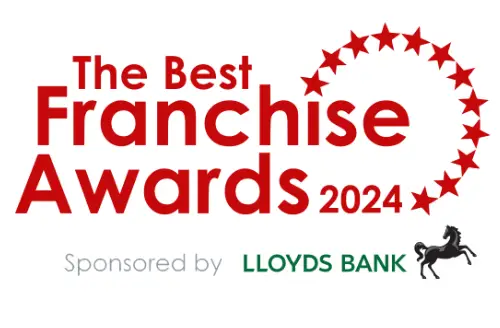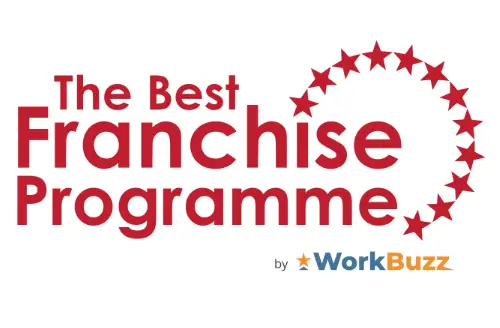In a food setting, it’s no longer a question of eating out or ordering takeaway – there are a multitude of restaurant types, yet more cuisine options and a myriad of formats to enjoy that food in.
These options have been created to meet consumer demand – and in response, the consumer is becoming more discerning, with higher expectations. Above all, the consumer is looking for one thing: choice.
Whether that is choice of location, food, price point – even ordering format – consumer demand is dictating how businesses evolve, whether they are new or old. Carl’s Jr. is over 80 years old and established in more than 40 countries worldwide, yet as we build on our footprint in Europe, we are taking the approach of a start-up. For us, this is rooted in listening to our customers, our partners and our franchisees, to deliver the uninhibited enjoyment that consumers crave from QSR.
As we opened the doors of our 80th Carl’s Jr. restaurant in Europe this summer, it was clear to me that the customer experience is more important than ever. For Carl’s Jr., serving the needs of our customers is at the heart of everything we do – and to be successful in the QSR category, brands must marry the needs of the consumer with their business objectives.
In order to thrive in the months and years to come, brands should keep the following five points in mind:
Convenience
QSR dining is a unique experience – it blends speed of service with great-tasting food. QSR is the home of ‘convenience food’, but as the industry continues to innovate, convenience must now refer to the entire QSR experience – not just the food itself.
The key to this is integrating technology, starting with how customers order. From dine-in to drive thru and delivery services, a successful brand must show up in the places customers want to be met. But beyond this, QSR brands must harness tech to make the purchasing process seamless.
Take dine-in for example: ordering at a digital kiosk can be significantly more convenient. The opportunity to order quickly helps to eliminate queues, and when a queue of more than two people decrease, potential sales increase by 10%. Data also shows that QSR kiosks increase average spend and number of transactions – the latest figures from our restaurants in Denmark show an average check increase of almost 40% from kiosk orders versus counter orders.
Cost
As we emerge from the hardships of the pandemic, the consumer approach to dining out has evolved. According to a report by the European Central Bank1, many households across Europe are ‘not missing’ the things they cut back on during lockdowns and when it comes to spending, consumers are more cautious regarding luxuries such as dining out. Whilst this may sound like a detractor, it is in fact a great opportunity for the QSR industry, as casual dining customers look to switch up their habits.
To attract new and existing customers, QSR brands need to emphasise their great atmosphere alongside an affordable price point. When customers are parting with their money, they want to enjoy the experience. That is where QSR restaurants should be looking to capitalise.
At Carl’s Jr., we are proud to offer table service as a standard –helping to create a market-leading customer experience; one that can contend with casual dining experiences and offer consumers more choice.
Consistency
For any business, securing repeat customers is the ultimate goal, and one way to achieve that is creating familiarity between the business and the consumer. For a global operation such as Carl’s Jr. that means creating worldwide consistency in the experiences our guests enjoy – we want them to be confident that wherever they are in the world, they will be able to enjoy the standout atmosphere, service and high-quality food they expect from our brand.
We strive to be the QSR quality leader in every market in which we operate, with authentic, affordable menus that are unapologetically indulgent, awakening cravings consumers didn’t even know they had. In order to deliver against that vision, we invest in consistency across our estate.
Every new franchisee we work with starts their business journey with a 12-week immersion period with the Carl’s Jr. team in California, to give them an understanding of our company culture and get them embedded in the brand’s DNA. Based on time alone, this is a big commitment, but it is necessary – consumers are looking for a brand they can rely on.
However, let me be clear, consistency does not mean bland or uniform, there is a place for local nuance and understanding in all our operations. For example, our restaurant in La Garde, France, provides customers with a complimentary espresso at the end of their meals. This is a localised perk, offered in recognition of consumer expectations in the area and nodding to Carl’s Jr.’s understanding of the local culture. This restaurant is now our highest performing in Europe and has successfully married a specific tailored approach with the reliability of our global brand.
Quality
Our quality, game-changing food is our brand, but to be a successful QSR brand, quality also needs to extend to the customer experience. There are many ways to create a quality experience, whether that’s a helpful server who goes the extra mile by guiding customers through ‘fam favourite’ menu items, free wi-fi which encourages guests to take their time in-restaurant, or a comfortable, inviting setting.
When you set foot into a Carl’s Jr. restaurant anywhere in the world, you should be greeted with a warm atmosphere, in a modern restaurant, where you can feel the quality of the dine-in experience from the outset. There are some QSR restaurants that are considered tired and old fashioned, a perception which immediately undermines the sense of quality customers crave.
Brands need to deliver the same great quality of food and experience. One without the other is unlikely to make an impression on consumers and repeat visits will remain elusive.
Choice
Choice should underpin every element of the consumer experience. From a strong range of menu options, to selecting how they wish to engage with the restaurant – whether that’s in person in-restaurant, online, via drive thru or delivery – allowing the consumer to have a say in their experience is key. For me, the intersection of technology and human service is the best route to delivering that choice – breeding innovation and allowing our restaurants to stay at the forefront of consumer trends.
A successful brand will listen more than it speaks, to understand exactly what its customer is looking for in a range of scenarios and then delivering against those demands. That’s how we win in a post-pandemic world.
1 https:/www.bloomberg.com/news/articles/2021-10-07/pandemic-may-change-european-consumers-for-good-ecb-study-finds

































